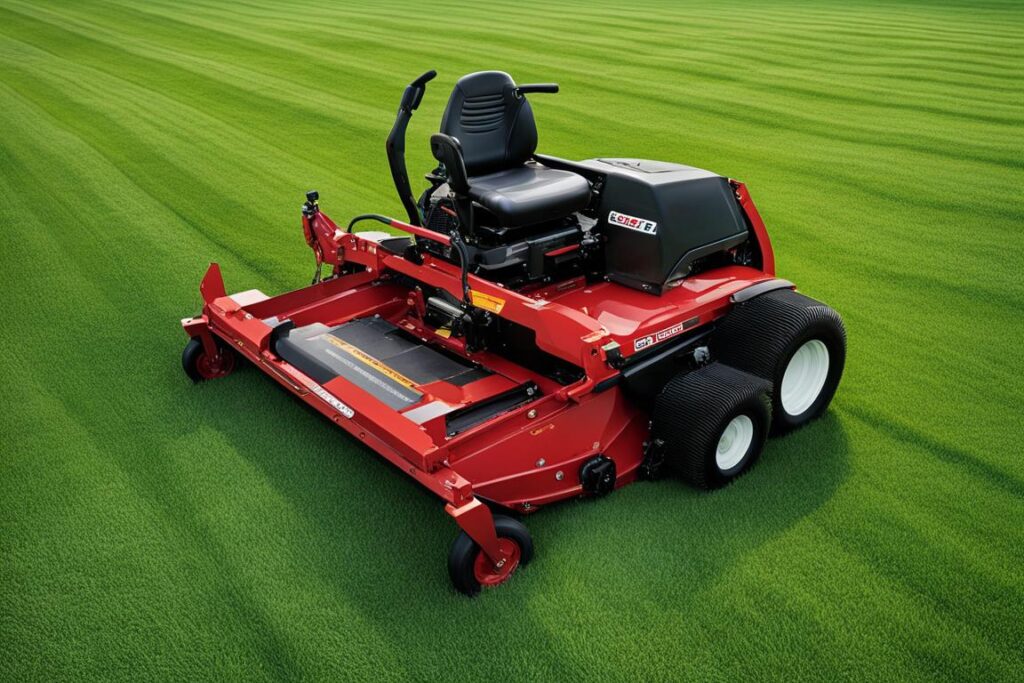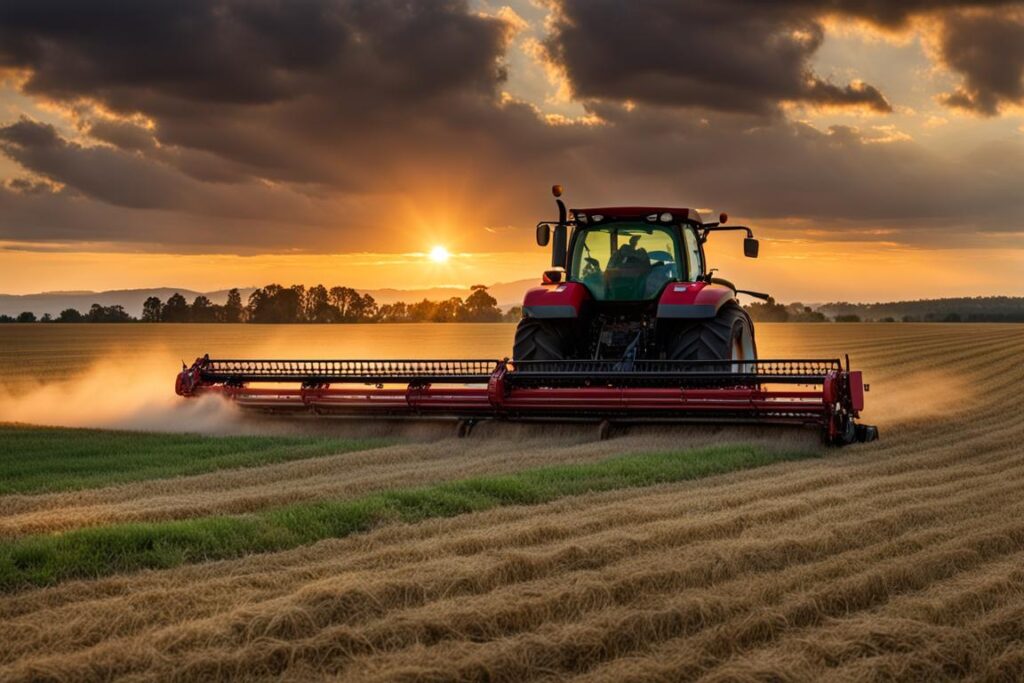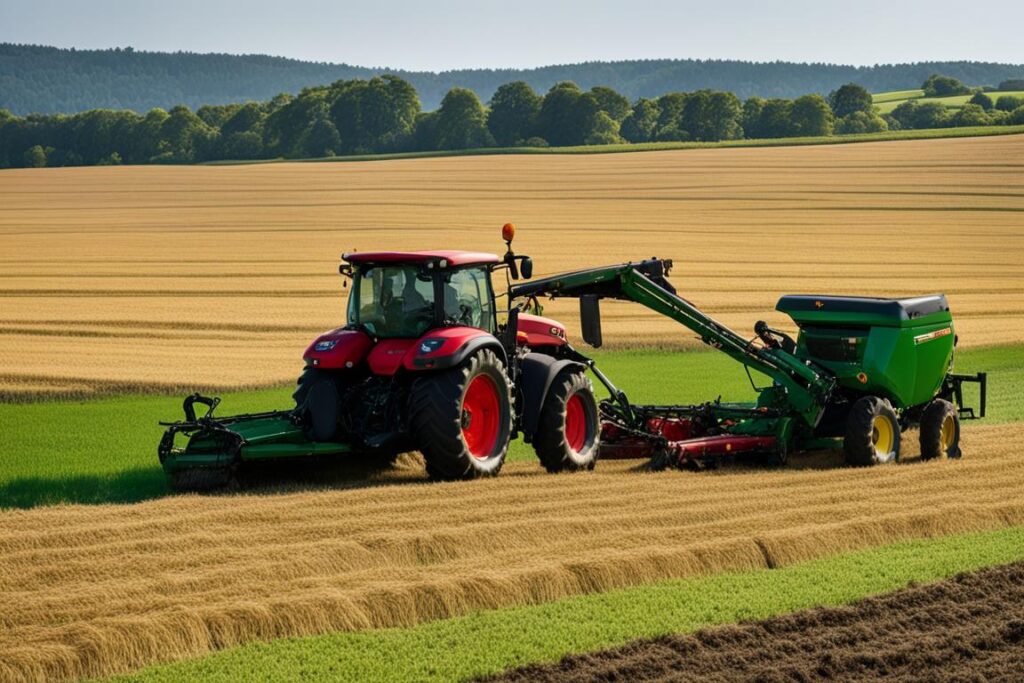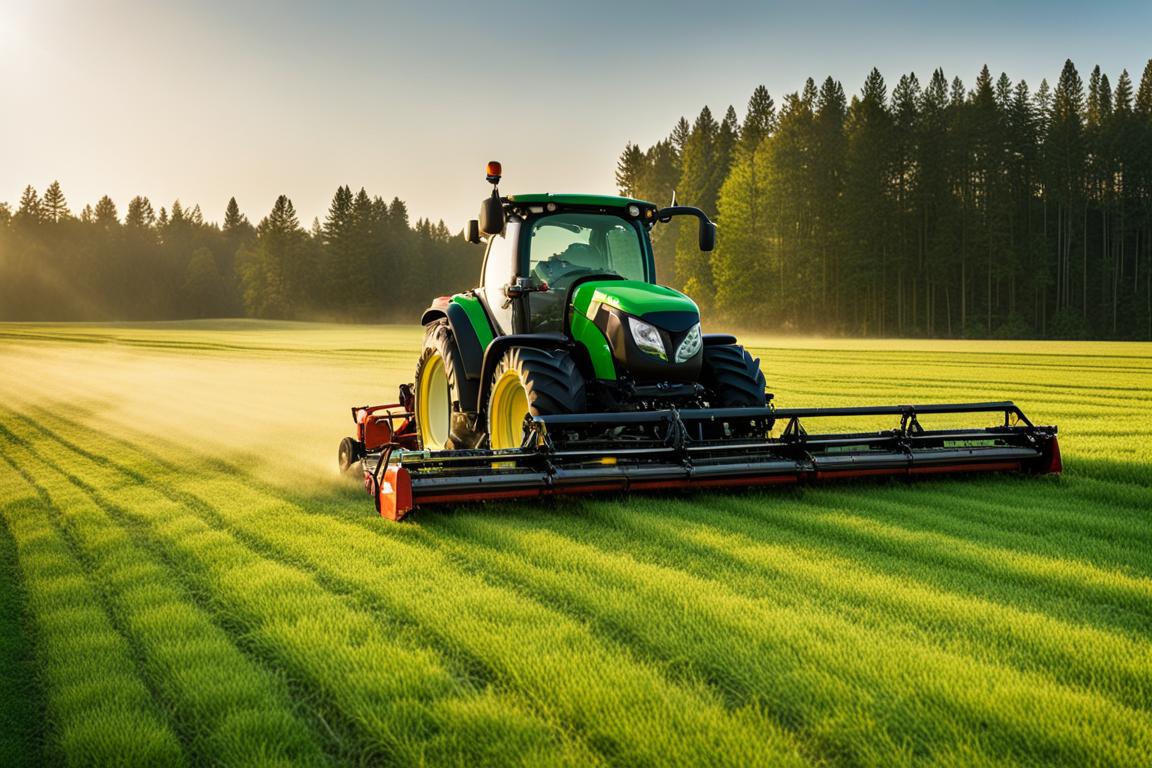A mower conditioner is an essential farm implement for hay crop producers who value quality and efficiency in their harvest. But what exactly is a mower conditioner? In simple terms, it is a machine that crimps and crushes newly cut hay to promote faster and more even drying. This process involves passing the hay through two grooved rollers, which split the stalks and allow trapped liquid to escape.
Mower conditioners come in various types, including sickle bar, disc, and drum mowers, each with different features and benefits. Additionally, there are different types of conditioners such as rubber-roller, steel-roller, and flail, each serving a specific purpose in improving the quality and drying time of the hay.
<h3>Key Takeaways</h3>
<ul>
<li>A mower conditioner is a farm implement used to crimp and crush newly cut hay for faster and more even drying.</li>
<li>It consists of grooved rollers that split the stalks and allow trapped liquid to escape.</li>
<li>Mower conditioners come in different types, such as sickle bar, disc, and drum mowers, and different conditioners, such as rubber-roller, steel-roller, and flail.</li>
<li>Using a mower conditioner improves the efficiency and productivity of the hay harvesting process.</li>
</ul>
How Does a Mower Conditioner Work
Mower conditioners play a crucial role in the hay harvesting process by promoting faster drying and improving forage quality. Understanding how these machines work and the different types available is essential for farmers looking to optimize their productivity and achieve superior results.
At its core, a mower conditioner combines cutting and conditioning functions to prepare the hay for efficient drying. It operates by first cutting the hay using either a sickle bar, disc, or drum mower. The choice of mower type depends on factors such as the crop being harvested and the desired cutting width. Sickle bar mowers utilize a reciprocating blade to cut the grass, while disc mowers feature small rotating discs with attached knives. Drum mowers, on the other hand, consist of large plates called drums that cut the hay as they rotate.

“Mower conditioners not only cut the hay but also pass it through a conditioner, which further prepares it for drying. The conditioner can come in different types, each exerting a specific effect on the hay.”
The conditioner, an integral component of the mower conditioner, enables the efficient drying of the cut hay. There are several types of conditioners available, including rubber-roller, steel-roller, and flail. Each type utilizes different mechanisms to achieve the desired results.
The rubber-roller and steel-roller conditioner consists of two intermeshing rollers that crimp and crush the crop as it passes through. The crimping and crushing action breaks down the stalks, helping the trapped moisture escape and facilitating faster drying. This type of conditioner is ideal for hay that requires thorough conditioning and for farmers who prioritize efficient drying times.
“On the other hand, the flail conditioner takes a different approach to conditioning the hay. Instead of using rollers, it relies on beating the crop against the top of the mower conditioner. This action helps break down the stems, promoting drying. Farmers who prefer a more aggressive conditioning method may opt for a flail conditioner.”
The choice of mower conditioner type depends on factors such as the intended use and the desired condition of the hay. By offering various options, manufacturers cater to the diverse needs and preferences of farmers.
Mower Conditioner Features
In addition to the different conditioning mechanisms, mower conditioners also come with a range of features designed to enhance productivity and overall efficiency. These features may include:
- Adjustable Windrows: Some mower conditioners allow farmers to customize the size and shape of the windrows, making it easier to manage subsequent harvesting and baling processes.
- Lightweight Construction: Many modern mower conditioners feature lightweight materials, such as aluminum, to improve maneuverability and reduce strain on the tractor.
- Flexible Cutting Heights: Mower conditioners often come with adjustable cutting heights, allowing farmers to adapt to different field conditions and crop heights.
By considering these features, farmers can select a mower conditioner that aligns with their specific needs and maximizes their operational efficiency.
Selecting and Operating a Mower Conditioner
When it comes to selecting a mower conditioner, farmers should take several factors into consideration to ensure they choose the right equipment for their needs. Size of operation, type of crops, and specific preferences should all play a role in the decision-making process. Additionally, it is important to check the cutting width, power requirements, and overall durability of the mower conditioner.
Once a mower conditioner is purchased, proper setup and operation are crucial for optimal performance and longevity. Familiarizing oneself with the operator’s manual is a great place to start. This will provide essential information on necessary safety measures and attachment procedures.
Proper attachment of the mower conditioner to the tractor is vital for smooth operation. Farmers should ensure that the equipment is properly attached and make necessary adjustments to the cutting height, cutterbar tilt, and windrow forming shields based on the field conditions.
Regular maintenance is key to keeping the mower conditioner in good working condition. This includes checking knives, roll clearance, and conditioning hood position to ensure smooth operation and prevent issues. By following a regular maintenance schedule, farmers can avoid costly breakdowns and repairs.
It is important for farmers to be aware of potential issues that may arise during operation and troubleshoot them promptly. Taking quick action to address any problems can help minimize downtime and ensure the continued efficiency of the equipment.

Overall, selecting and operating a mower conditioner requires careful consideration of various factors, as well as adherence to proper setup, maintenance, and troubleshooting practices. By taking these steps, farmers can maximize the advantages of using a mower conditioner, such as improved drying time and higher forage quality, while minimizing potential issues that may arise.
Benefits of Using a Mower Conditioner
There are several mower conditioner benefits that make it an invaluable tool for hay harvesting. Let’s explore the advantages of using a mower conditioner in detail:
- Improved Drying Time: A mower conditioner plays a crucial role in speeding up the drying process of hay. By crimping and crushing the hay, it allows moisture to escape more quickly. This is especially beneficial for the first cutting of the hay crop, which typically consists of coarse stalks that take longer to dry. With a mower conditioner, farmers can enhance efficiency and turnaround time.
- More Even Drying: Mower conditioners promote more even drying, resulting in higher forage quality. By cutting the hay efficiently and reducing the time it spends in the field, farmers can minimize weather damage and maintain the nutritional value of the forage. This ultimately leads to better feed and increased profitability.
- Modern Features: Today’s mower conditioners, like the ones offered by John Deere, come with advanced features that further enhance productivity and efficiency. Lightweight constructions, customizable windrows, and maneuverability enable farmers to tackle unique field conditions and maximize their output with ease.
Using a mower conditioner for hay harvesting offers numerous benefits for farmers, from faster drying time to improved forage quality. With advanced features and modern designs, it’s a valuable investment for any hay crop producer.

Conclusion
Mower conditioners play a vital role in optimizing the hay harvest for crop producers. By incorporating a mower conditioner into their workflow, farmers can significantly improve the drying time, enhance the quality of forage, and increase overall productivity. With a wide range of types and features to choose from, farmers can select a mower conditioner that best suits their specific needs and preferences.
Regular maintenance and troubleshooting are essential to ensure smooth operation and prevent costly breakdowns. By conducting routine checks, such as inspecting the knives, roll clearance, and positioning of the conditioning hood, farmers can keep their mower conditioner in excellent working condition, ensuring long-term durability and efficiency.
The use of a mower conditioner revolutionizes the hay harvesting process, making it more efficient, effective, and rewarding for farmers. With faster drying times and improved forage quality, farmers can avoid weather-related damages and maintain the nutritional value of their crops. Additionally, modern mower conditioner models, like those from renowned brands such as John Deere, offer innovative features that further enhance productivity and overall efficiency.
FAQ
What is a mower conditioner?
A mower conditioner is a farm implement used to crimp and crush newly cut hay, promoting faster and more even drying.
How does a mower conditioner work?
A mower conditioner works by cutting the hay with a sickle bar, disc, or drum mower and then passing it through a conditioner that crimps and crushes the hay to promote faster drying.
What are the types of mower conditioners?
There are various types of mower conditioners, including sickle bar, disc, and drum mowers, each with different types of conditioners such as rubber-roller, steel-roller, and flail.
How do I select a mower conditioner?
When selecting a mower conditioner, farmers should consider factors such as the size of their operation, the type of crops they are harvesting, and their specific needs and preferences. They should also check the cutting width, power requirements, and overall durability of the equipment.
How do I properly operate a mower conditioner?
Proper setup and operation of a mower conditioner are essential. Farmers should carefully read the operator’s manual, ensure proper attachment to the tractor, and adjust cutting height, cutterbar tilt, and windrow forming shields according to the field conditions.
What maintenance is required for a mower conditioner?
Regular maintenance, such as checking the knives, roll clearance, and conditioning hood position, is crucial to keep the mower conditioner in good working condition.
What are the benefits of using a mower conditioner?
Using a mower conditioner improves drying time, promotes more even drying, and enhances forage quality. It also offers features like lightweight construction, customizable windrows, and maneuverability, increasing productivity and efficiency.
How can I troubleshoot mower conditioner issues?
Farmers should be aware of potential issues and troubleshoot them promptly to avoid major breakdowns and costly repairs. Regular maintenance and adherence to operator’s manual guidelines can help prevent common issues.
